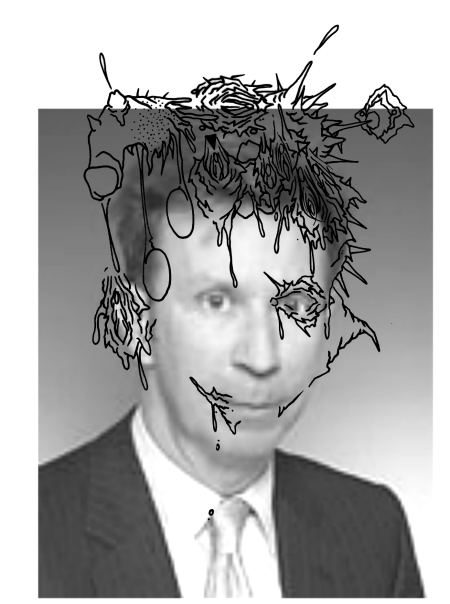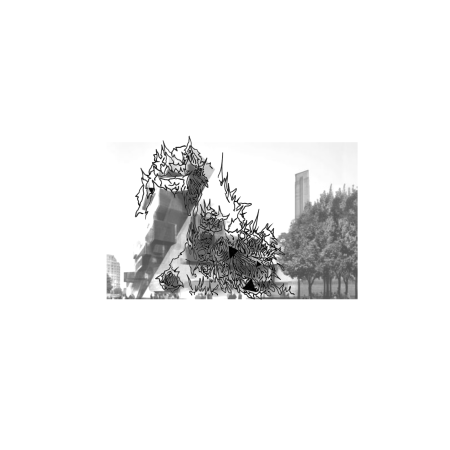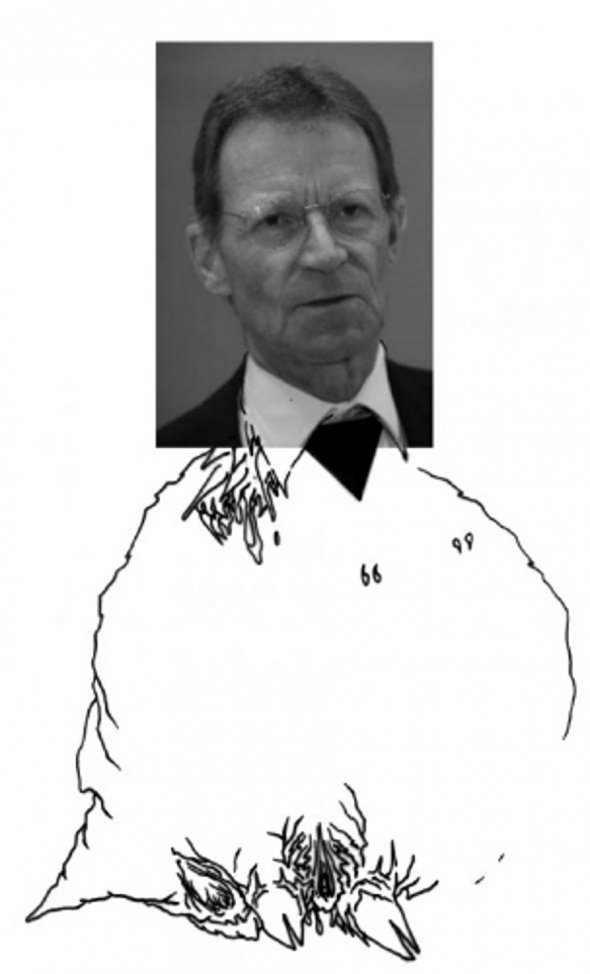A Boom Without End? Liquidity, Critique and the Art Market
If the wider economy were to crash, would the art market follow it down? And are critical-political claims for art as inflated as prices? Suhail Malik puts his money on art's (economic) autonomy
London, June 2007: in this one month White Cube shows a work with a price tag of £50 million, Christie's Europe takes £237 million in sales of contemporary art in one week, several more galleries are swept up into the Frieze farrago. Sales at the artfair have risen from £20 million in 2003 to £26 million in 2004 to £33 million in 2005 to undisclosed but 'record' amounts in 2006.[1] These figures index how the contemporary art market in London is not just booming – it's positively bursting with money. But, as is commonly anticipated, after a boom comes a bust, retrospectively consigning the boom to the sorry status of a bubble that everyone always knew was about to pop and consigning all its speculators to the rank of fools for having been swept up by the hubristic pursuit of a quick buck.The history of booms and busts in the art market, of course, follows a pattern and model derived from the stock market not just in its lexicon but also in generating the capital that now supports the art market. The current boom in London's art market is attributable to several distinct reasons for recent capital growth in London:— Non-domiciled UK residents are only required to pay tax for earnings within the UK, not on overseas earnings; consequently, the UK and London in particular have become a tax haven for the non-British super-rich who will, of course, spend their wealth within the UK.[2] As The Guardian pithily puts it: 'Prominent among this group are the Russians, who having transformed London's property market, are doing the same to the capital's art scene'.[3]— The US Congress's tightening up of American financial and legal oversight mechanisms following the collapse of Enron and WorldCom with the Sarbanes-Oxley Act of 2002 means that the UK now provides a more relaxed regulatory framework for these services, drawing international finance sector companies and their high earning employees to the UK.
— These companies and employees bring with them their private investments expecting substantial returns, leading to further growth in financial infrastructure such as hedge fund assets, up 63 percent annually in the UK compared to 13 percent in the US.[4] Of particular interest here are art investment hedge funds such as AIA's Art Trading Fund, aiming to raise £25 million for investment by July 2007 in mid-price (£100 - £500,000) mainly post-impressionist artworks for annual returns of 30 percent with three to six month period holdings – highly desirable short term high return rates.[5] Despite ABN-Amro abandoning setting up a 'fund of art funds' in September 2005, it retained holdings in The China Fund, concentrating on decorative arts, and the London based Fine Art Fund, estimated at $50 million.[6] Other structured funds in contemporary art include the Swiss based Art Collectors Fund, founded by Max Wigram and former Tate director of collections Jeremy Lewison which had attracted $50 million by late 2005 for investment in post-war and contemporary art.[7] Though such funds continue to struggle to gain leverage, they are nonetheless proposed persistently enough to become an increasingly familiar feature in investment and contemporary art portfolios.These are but local examples of a broader development in the organisation of finance which are of course not restricted to the UK or London as its 'global city'. As Henry Wyndham, chairman of Sotheby's Europe, gleefully puts it,At the top end of the market there's immense wealth. There's more wealth around than at any time in my lifetime. It's all over the world.[8]
Image: John Studzinski, Tate Trustee and Senior Managing Director of Blackstone private equity company
Wealth here is not just that of the super-rich individuals and families but also that of corporations and investment companies, each reflecting the accelerated growth of global assets in recent years. Such growth can itself be attributed to:increases in the volumes and speeds of global trading, investments and markets with the technical and regulatory restructuring of finance since the 1980s.the opening up of the former Soviet Union to market liberalisation and China as globally directed manufacturing economy.the credit expansion policies of the US government and banking.The key point here, however, is that the rapid acceleration of finance and the increases in wealth that reflect it rely upon and generate a great mobility and transferability – or liquidity – of assets (not necessarily money, though that is the most obvious example of a liquid asset).The increased total and operational liquidity of assets in recent years has generated febrile stock market activity in the richer countries, despite the decline in their manufacturing and production sectors (a consequence that makes little sense in the terms of neo-classical economics where capital is determined by real manufacturing capital and investment in production from which profits are attained), as well as the enormous increase in financialisation.[9] Liquidity, however, brings instability with it precisely because assets in finance capital must be readily convertible in ownership and asset trading, as opposed to the fixed capital of, for example, a manufacturing plant which more permanently stabilises the capital investment into material goods committed to production over a number of years. While the profitability of the latter capital can be anticipated with some regularity, highly liquid asset markets prohibit even such limited reassurance or returns.
The instability exacerbated in capital markets by financialisation results in the increased global wealth Henry Wyndham remarks on. But while such accumulation seeks new investment opportunities and turns to the increased returns of the art market as a site of new market growth, this turn to art has to be understood precisely as a way in which capital assets can be held in relatively illiquid forms as an insurance or hedge against the instabilities bound up with share trading and without the risk associated with economics of production (the 'real economy' in neo-classical or Marxian terms). That is, while art is a liquid asset it is also somewhat less liquid than share trading and other financial instruments and so can act as a capital holding that is subject to a different set of risks than either stock market based or manufacturing/service investments. The distribution of risk is key to the hedging of investments and securitises the overall risk by 'spreading the bet'. Art now plays a minor role in such securitisation precisely because of its non-instrumentality and, on the primary market, its informally structured and non-regulated exchanges.Given these reasons for the current boom of the art markets the expectation of an inevitable bust needs to be tempered. As much as art demonstrates the heightened (consumer) power congruent to increased wealth and prices (the 'Veblen effect'), it is now in part also bought as a hedge against downturns or crashes in stock markets. This is distinct from previous periods. During the last art market boom of the 1980s, when art was more exclusively the object of Veblenian 'conspicuous consumption' from wealth derived elsewhere, the correlation between the stock and art markets was relatively tight. The bust of the stock market in 1987 led to the inevitable bust of the art market, a model that still dominates current anticipations of likely art market trends. However, if the current boom in the art market is in part attributable to its serving as a hedge against movements and instability in other assets including stocks and shares, the movements and cycles of the art market are in part uncoupled from that of the world's stock markets. Consequently, a crash in the stock market need not result in an accompanying crash in the art market (as per the early 1990s in the US and Germany) but instead to an increase in art market prices as a compensatory investment. A boom in the art market may then not be followed by a bust even if the stock market goes that way and even if the art market would doubtless shrink as the total monies coming into it would diminish.In the broader context, the uncoupling of the equity and art markets serves to strengthen the coupling of financial interests and state power seeking to draw in international capital for its own wealth generation. It has been noted that the UK, and London as its global city, seeks to compete on precisely these terms through its lenient regulatory and tax regime. Richard Florida has been influential in proposing that such wealth is also drawn in by the promotion of the 'creative' industries, suggesting that support for the arts is in the interests of economic growth.[10]  Image: Proposed extension to London's Tate Modern partly paid for by John Studzinski's £5 million donation
Image: Proposed extension to London's Tate Modern partly paid for by John Studzinski's £5 million donation
However, as the market for contemporary art becomes a sector for increasing private investment and inflates to new levels of market and social operation and significance through media interest (in its wealth, not least), arts funding is increasingly drained in anticipation that it will be 'supported' by such private interests. Simultaneously, government policy seeks to attract international capital and its institutions and staff by promoting the global city through large scale signature events with a global span such as the Olympics that cannot be financially leveraged by private capital alone (precisely because, unlike the audience or property involved in that event, it does not amount to an investment with direct returns). What is evidenced by such signature events is that London is able to smoothly consolidate international business interests, government infrastructural efficiency and high global public profile. In a different way, Frieze plays its part in demonstrating as much. The redistribution of government support for culture away from arts infrastructure and practitioners in the global city and towards drawing in interest from finance capital is made politically palatable to socially and liberally minded interests alike by modes of democracy-talk such as 'local regeneration' and popular inclusivity/diversity in which sport has a key role.
In the narrower context, even if the trajectories of the stock and art markets hypothesised above are not realised as mooted, nonetheless the (admittedly perhaps minor) uncoupling of the art market from the stock market suggests what we are witnessing is a restructuring of the art market. This restructuring is not just a result of the inflation of the art market consequent to the volumes of money being pumped into it – though such growth clearly requires new instruments and infrastructures to manage these increases. In ways less visible than the heightened cash flows and lavish parties make so evident, an uncoupling of the art market from the stock price indices and business and finance cycles suggests that the current boom is the first step toward a new kind of institutionalisation of contemporary art. Melanie Gilligan has proposed that the cultural risks considered key to art’s continued modernity reflect the culture of risk hedging central to global finance and to some extent bespeak finance capital’s interest in art.[11] The reflection or shift from cultural risk (contemporary art) to marketised risk (finance capital) is, however, not as obvious as a plea to a common culture or abstractly determined ideology of risk would suggest – not least because what constitutes a culture, more precisely a critical culture, is itself transformed by such a restructuring.For what is evident from the securitising of financial risk through contemporary art and its market is that the cultural risks which continue to form the terms of understanding of what contemporary art is assumed to be doing in its critical-political aspect in fact have no substantial or limiting claim on the interests of finance capital or, what is now the same thing, on political economy (meaning here ‘the politics of economics’) today. That is, the critical-political claims of contemporary art, such as they are, are given the lie by their service to securitising the massive liquidity that now dominates political economy – and which shapes politics. This is not to say that critical art vanishes into an identification with the accumulation of wealth that now pervades it and which it clearly now serves as both asset and, differently, cultural index. Rather, that critique persists – must persist – if such wealth and finance-driven politics are to demonstrate an allegiance to and commensurability with the counter-normative socio-political contemporaneity into which such accumulation is integrated. This is not just a demonstration of the taste, cultural-aesthetic preferences, and power of an increasingly wealthy sector. It is also a mode of legitimisation that disposes of the antagonism between art's corrosive counter-hegemonic ambitions and such power; an incommensurability, if not conflict of interests (between cultural politics and political economy, precisely), that has been central to art's modernist tradition and its supporting discourses. The critical purchase contemporary art has is now a method of legitimation rather than delegitimation of dominant power as it is financially driven not despite but because of its ostensible content and claims with regard to cultural politics. In order to service the deployment of increased fiscal liquidity into the legitimating figure of critical cultural politics, it is important that art's critical claims do not disappear.
Suhail Malik <s.malik_AT_gold.ac.uk> teaches in the Department of Visual Arts, Goldsmiths, London, and is currently working on a philosophy of American power
Images by " " [sic] Tim Goldie
Footnotes
[1] Undisclosed because 'not all galleries reveal their sales' making final calculations impossible, according to Frieze's co-owner Matthew Slotover. Art Basel also refuses to disclose total sales, for the same putative reasons, http://www.bloomberg.com/apps/news?pid=20601088&si.... Although large for the artworld, these sums are only at the level of a small to medium sized international investment fund.
[2] 'How art follows money: why London is gaining on New York', The Art Newspaper, 15 March 2007, http://www.theartnewspaper.com/article01.asp?id=589
[3] 'Prices soar as world's super-rich invade London art market', The Guardian, 23 June, 2007, http://www.arts.guardian.co.uk/art/news/story/0,21...
[4] The Art Newspaper, op.cit.
[5] 'Hedge fund sees art as exotic asset class', The Financial Times, 15 June 2007, http://www.ft.com/cms/s/9e07df98-1b57-11dc-bc55-00...
[6] 'ABN-AMRO pulls out of art funds', The Art Newspaper, September 2006, http://www.theartnewspaper.com/article01.asp?id=9
[7] The Art Newspaper, op.cit.
[8] The Guardian, op.cit.
[9] 'According to the McKinsey Global Institute, the ratio of global financial assets to world output soared from 109 per cent in 1980 to 316 percent in 2005. The value of the global stock of equities and bonds reached about $140 [trillion] by the latter year. On top of this mountain is piled yet another, made of derivatives, whose face value reached $286 [trillion] in 2006, up from a mere $3.45 [trillion] in 1990' ('Why finance will not be unfettered', The Financial Times, 25 June, 2007 [http://www.ft.com/cms/s/d92314d2-22b7-11dc-ac53-00.... Compare with the 2006 GDP of $13 trillion for the USA and $66 trillion for the world [http://www.cia.gov/library/publications/the-world-...)]. For changes in capital accumulation in the US economy away from manufacturing towards finance, cf. Greta Krippner, 'The Financialisation of the American Economy', in Socio-Economic Review (2005) 3, pp.173-208.
[10] Cities and the Creative Class, Routledge, 2004.
[11] 'Hedge Funds', Texte Zur Kunst 66, June 2007, http://www.textezurkunst.de/66/hedge-fund/
Mute Books Orders
For Mute Books distribution contact Anagram Books
contact@anagrambooks.com
For online purchases visit anagrambooks.com








